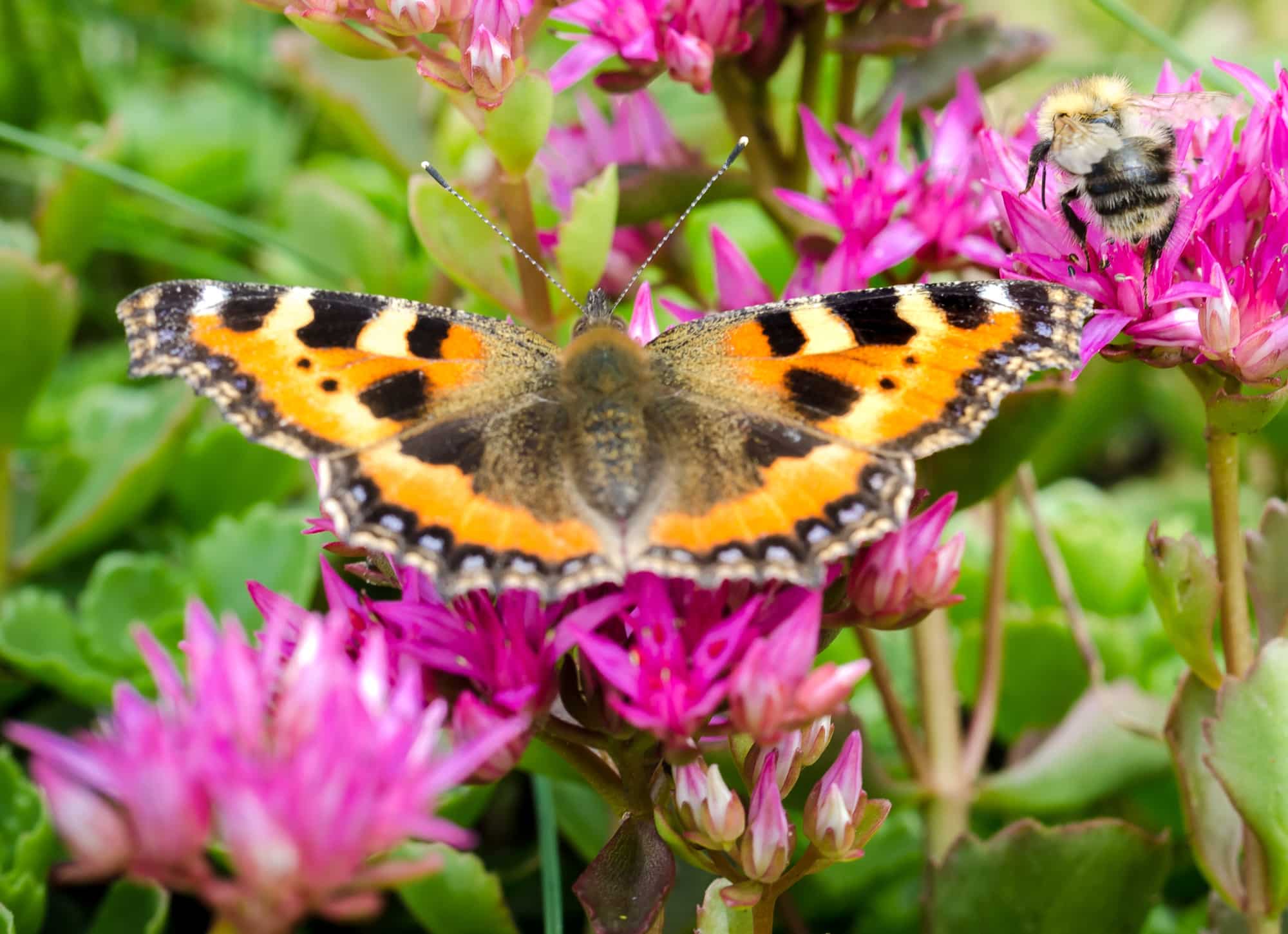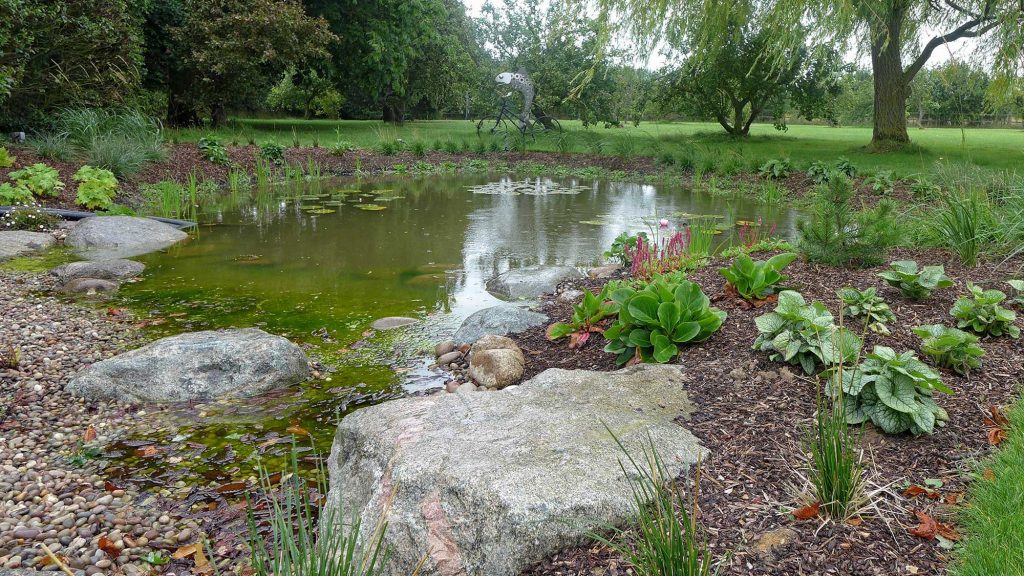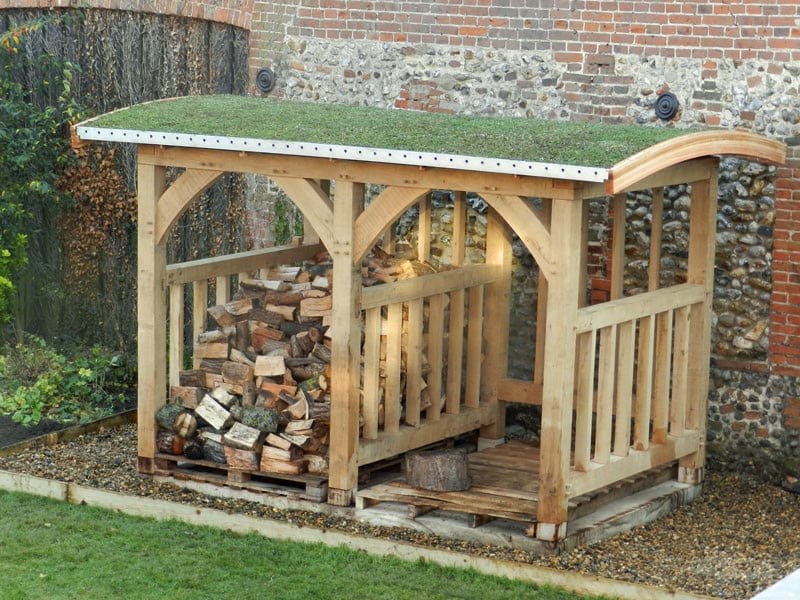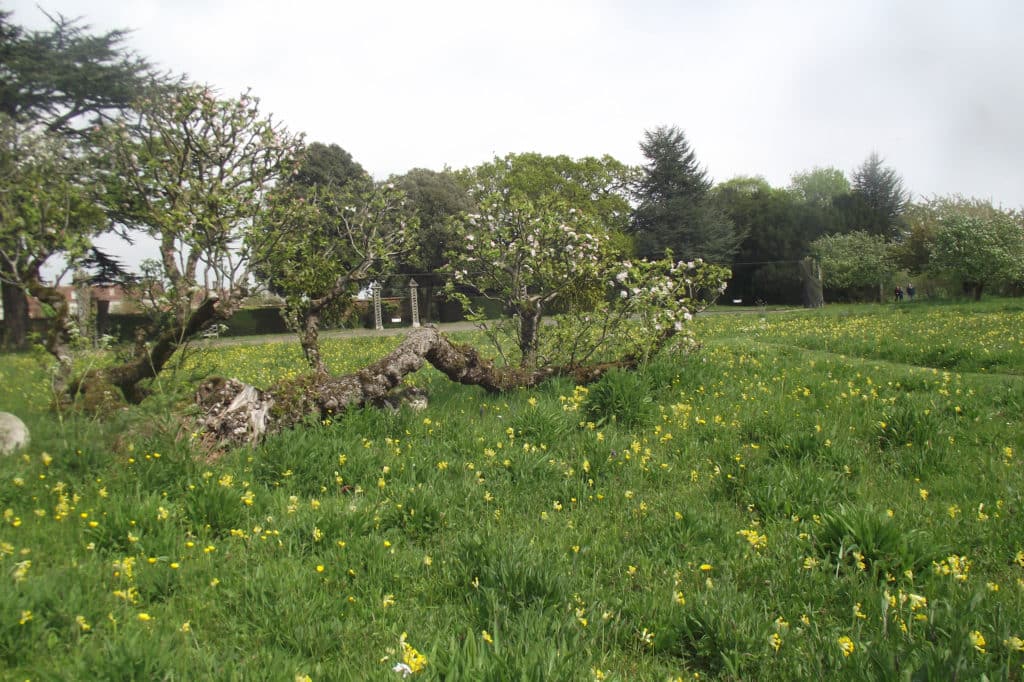19 Oct Maximising biodiversity in your garden
With all of its trials and tribulations, 2020 has certainly helped us to appreciate our gardens. In this article we’re looking at ways to make your outdoor space even more special by maximising biodiversity in your garden.
Biodiversity is all about creating an environment where the maximum number of living things can thrive. In your garden, the most important living things are, of course, you and your family. But here’s the thing, your wellbeing will improve when you are all surrounded by nature. By maximising biodiversity in your garden, you are helping yourself to thrive.
Top Ten suggestions for maximising biodiversity in your garden
- Add a wildlife-friendly water feature
- Provide shelter for overwintering insects
- Ditch the pesticides and use companion planting instead
- Plant a hedge
- Install a green roof on your shed or bin store
- Go vertical – living walls are great
- Make the most of wildflowers
- Treat yourself to a fruit tree
- Leave an area of lawn just a little bit longer
- Create a hedgehog highway
Wildlife-friendly water features
Every living thing needs three things. Water, food, and shelter. In that order. By adding a wildlife-friendly water feature to your garden, you will be making the best possible start to maximising biodiversity.
The most amazing wildlife-friendly water feature is a pond. You’ll find that just by creating a pond with sloping sides and a few plants, the wildlife will just appear. There’ll be birds drinking and bathing in the shallows, insects will visit it and then birds – or even bats will come on by to feast on the insects.
A wildlife-friendly pond designed by Tapestry Design Studios for our clients near Frinton
Ponds and tiny children are not a good mix. For safety, you could install a metal grid just below the surface of the water. You won’t see it – but it will stop anyone falling into the water. Alternatively, build a pretty fence around your wildlife area and only allow supervised visits to the pond.
Not every wildlife-friendly water feature is a full-on pond. A large corten steel planter (without the drainage holes!) can be used to create a very pretty water garden. Use it to collect rainwater runoff from your roof and it will double up as a dipping pond where you can fill your watering can.
Providing shelter for wildlife
I’m sure you’ve seen bug hotels for sale in the garden centres. They’re very stylish and they make great Christmas gifts. But you don’t need to spend a lot of money to provide shelter for wildlife.
- Don’t be too tidy – as border plants die down for the winter, leave the stalks where they are. You’ll be amazed at who will spend the winter tucked into the hollow stems.
- Create a log pile in a quiet spot.
- Gather autumn leaves and make a big heap of them in one corner. Within a couple of years, you’ll have some wonderful leaf mould for mulching.
- Don’t cut back that ivy – ivy flowers are an incredible source of pollen and nectar for bees
Plant a hedge
Autumn and winter are the ideal times to plant a new hedge. Bare root hedging plants are very cost effective and they’re really easy to plant. You could use hedging to create a smaller room within your garden. Perhaps your hedge could screen the bins from view. Or, and this is my favourite way to use hedging, plant some bare root hedging plants beside an existing wooden fence. By the time the fence ages, the plants will be big enough to replace it – over time, you will have saved a fortune in fencing costs.
Why plant a hedge? Hedges are the ultimate weapon for maximising biodiversity. Particularly if you choose a native species hedge. Spring blossoms for the bees, autumn berries for the birds and lots and lots of shelter for everyone. You’ll benefit too – I often specify a hedge in garden designs where the homeowner is troubled by road noise. Hedges are just brilliant at absorbing sound!
Green roofing
This log store is topped with a carpet of living sedum plants – these create a stunning floral display every summer and need very little care
picture courtesy of Harrowden Turf
Your garden is most definitely 3D and the ground is not the only place that you can grow plants. In fact, if you have limited space on the ground, you can “lift” the plants up and put them on the roof. Trust me, looking out of an upstairs window onto a living green roof will make you feel better than staring at bare roofing felt.
Green roofing is not hard to do – but you do need to make sure that the building or structure is strong enough to handle the weight of plants and growing media. Try “greening” your shed, your bin store or even your garden office.
Read more about green roofing here.
Living Walls
You may have seen living walls on commercial buildings – they’re often used in cities to help combat pollution. But there’s no reason why you can’t create a living wall of your own it’s the ultimate way to bring plants and biodiversity into a small garden.
Click here to read my article on using living walls in small spaces
Wildflowers for Biodiversity
Wildflowers are on-trend in garden design and I’m very glad about it. Native flowers and grasses are so well adapted to living in our climate that they’re incredibly easy to care for. Not only are wildflowers perfect for a low maintenance garden, they attract all manner of wildlife. From bees to beetles, birds to butterflies.
Where could you plant some wildflowers in your garden so that they will maximise biodiversity? On that slope that’s difficult to manage? To replace part of the lawn? (and save yourself some mowing!) Or what about a wildflower living roof? They’re awesome!
Try leaving an area of lawn to grow longer – you’ll be amazed at how many wildflowers will appear. Long grass is very attractive to meadow brown butterflies – so by not cutting your lawn you really do have the potential to maximise biodiversity.
Treat yourself to a fruit tree
The orchard at Helmingham Hall Gardens is a haven for biodiversity – but you don’t need this much space to plant a fruit tree or two
The COVID crisis has made many reluctant gardeners into grow-your-own aficionados. If you’ve been growing veggies in your plot this summer, why not expand your production and introduce a fruit tree or two. Apples, pears and plums are all easy to grow in this country. And just think of how much lower the carbon footprint will be compared to imported fruit.
Biodiversity wise – fruit trees really do have a lot to offer. The spring blossoms provide food for bees, the branches are perches for birds, and the windfall apples are food for lots of garden visitors.
Hedgehog highways
Hedgehogs really are struggling to adapt to 21st century living. These creatures eat the slugs, beetles, worms, caterpillars and earwigs they find in gardens and yes, hedges. Our spiny garden friends have very large foraging areas. So when we humans dig up their foraging fields build a housing estate with small gardens and big fences, the hedgehogs are stumped. If each and every householder cut a hole at the bottom of their fence on either side of their garden, Mrs Tiggywinkle and co would be able to do a grand job of saving our veggies from slug damage.
Biodiversity and garden design
If you want to maximise biodiversity in your garden but don’t want your outdoor space to look abandoned, you need the services of a good garden designer.
At Tapestry Design Studios we’re passionate about ecology and we’d love to help you find a way to compromise between biodiversity and functionality in your garden. We can redesign any size of garden to create a space that truly supports your wellbeing, is easy to care for and fits seamlessly with your lifestyle but still allows nature to thrive.
Contact us today to discuss a garden design that’s tailored to you
More articles to help you maximise biodiversity in your garden
How to create a cottage garden with a modern twist








Sorry, the comment form is closed at this time.